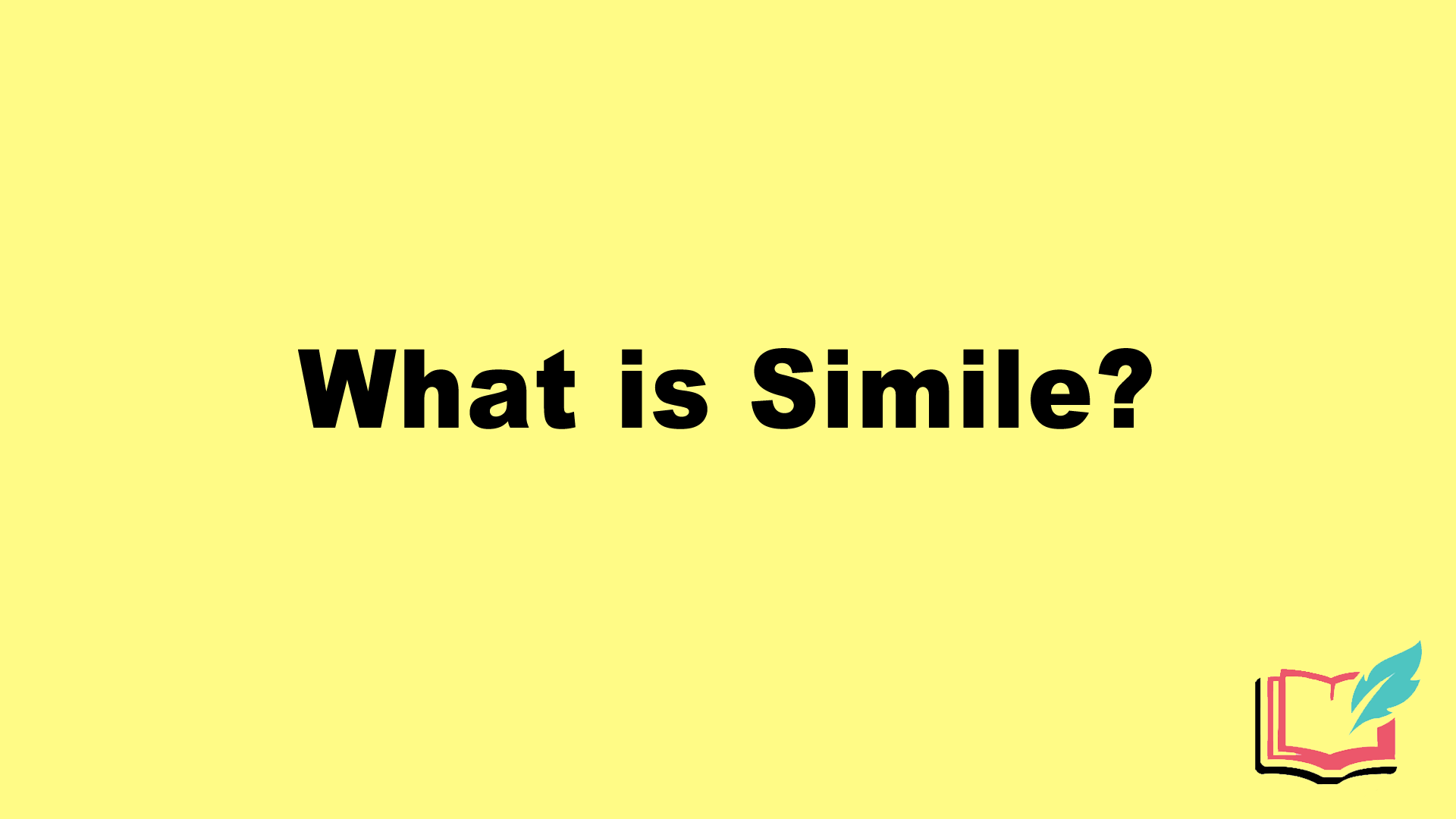
Simile is a figure of speech used to compare two unrelated people, subjects, or things by using comparison words such as “like” or “as.” Similes are direct comparisons that find or create similarities between two things.
What is a Simile?
Simile compares two unrelated things to show or create a commonality between them for the purpose of adding understanding and meaning. Similes use comparison words in order to achieve this and most commonly, the words used are either “like” or “as.”
For example, the phrase “you look as happy as a clam” is a simile because it compares a person to a clam. The two are unrelated, but the connecting comparison words in the simile (in this case, “as”) creates a connection to imply that the person looks extremely happy. Another common example is the phrase “your stare is cold as ice” which implies that the person’s stare is unwelcoming and unmoving.
Current Examples of Simile
Similes are popularly used across speech and writing for all sorts of purposes. Their ability to add depth to words makes them a useful tool. In poetry and lyrics, similes are a particularly useful tool. Take, for example, the following song lyric examples:
- “Candle in the Wind” by Elton John:
And it seems to me you’ve lived your life,
like a candle in the wind.
- “Bridge Over Troubled Water” by Simon & Garfunkel
I’m on your side
When times get rough
And friends just can’t be found
Like a bridge over troubled water
I will lay me down.
- “Smells Like Teen Spirit” by Nirvana
Other popular similes that are commonly found in everyday speech include the following and many, many more:
- As cool as a cucumber
- I slept like a log
- Hot as hell
- They fought like cats and dogs
- They are as different as night and day
- As sweet as sugar
- Dry as a bone
- Watching her performance was like watching grass grow
The Importance of Similes
Using similes adds flair to writing and can attract attention on the part of the reader by appealing to the senses by inviting the reader to use their imagination to fill in the blanks. This enhances understanding of what is being communicated.
Simile is particularly popular in poetry and lyrics because the way similes are often phrased with “like” or “as” adds rhythm and life to what is being said. This is another way that simile stimulates the senses and imagination on the part of the audience.
When making comparisons with similes, understanding of the author’s meaning in enhanced. This is done by inviting the reader to consider fresh perspectives. It also contextualizes ideas that may be too abstract to easily grasp. Using a simile to draw a comparison eliminates the need to do heavy abstract thinking to follow along with abstract ideas and/or subjects.
Overall, similes making language more vivid by encouraging creativity and they enhance the entertainment value. Similes appeal to the mind’s impulse to think in images and associations.
Examples of Similes in Literature
One of William Shakespeare’s most popular poems, “Sonnet 18,” uses an extended simile to describe how wonderful his beloved is. Notice that there is no use of “like” or “as” because the simile takes advantage of using more words that provide opportunities draw comparisons. Instead of just saying that she is like a summer day, Shakespeare opts to go further with the thought:
Shall I compare thee to a summer’s day?
Thou art more lovely and more temperate.
Rough winds do shake the darling buds of May,
And summer’s lease hath all too short a date.
Sometime too hot the eye of heaven shines,
And often is his gold complexion dimmed;
And every fair from fair sometime declines.
An example of simile used in prose comes from George Orwell’s novel 1984:
He sat as still as a mouse, in the futile hope that whoever it was might go away after a single attempt. But no, the knocking was repeated. The worst thing of all would be to delay. His heart was thumping like a drum, but his face, from long habit, was probably expressionless.
Another example of simile in prose comes from F. Scott Fitzgerald’s The Great Gatsby. The description from the narrator, Nick Carraway, of Tom and Daisy’s mansion serves both to paint a picture of the scene and also to indicate how uncomfortable Nick is among all that wealth:
A breeze blew through the room, blew curtains in at one end and out the other like pale flags, twisting them up toward the frosted wedding cake of the ceiling – and then rippled over the wine-colored rug, making a shadow on it as wind does on the sea.
The only completely stationary object in the room was an enormous couch on which two young women were buoyed up as though upon an anchored balloon. They were both in white and their dresses were rippling and fluttering as if they had just been blown back in after a short flight around the house. I must have stood for a few moments listening to the whip and snap of the curtains and the groan of a picture on the wall.
Recap: What Are Similes in Literature?
Simile is a device used to draw comparisons between two unrelated things, usually by using the words “like” or “as” or any other comparison word.
They serve to create deeper meaning and stimulate the imaginations of readers. Similes are a useful tool for increasing comprehension and artistry surrounding abstract topics.
